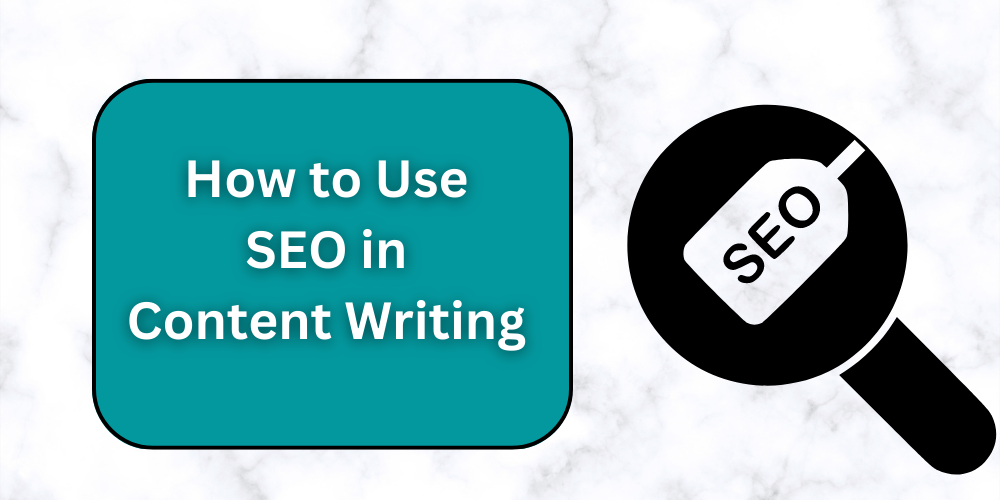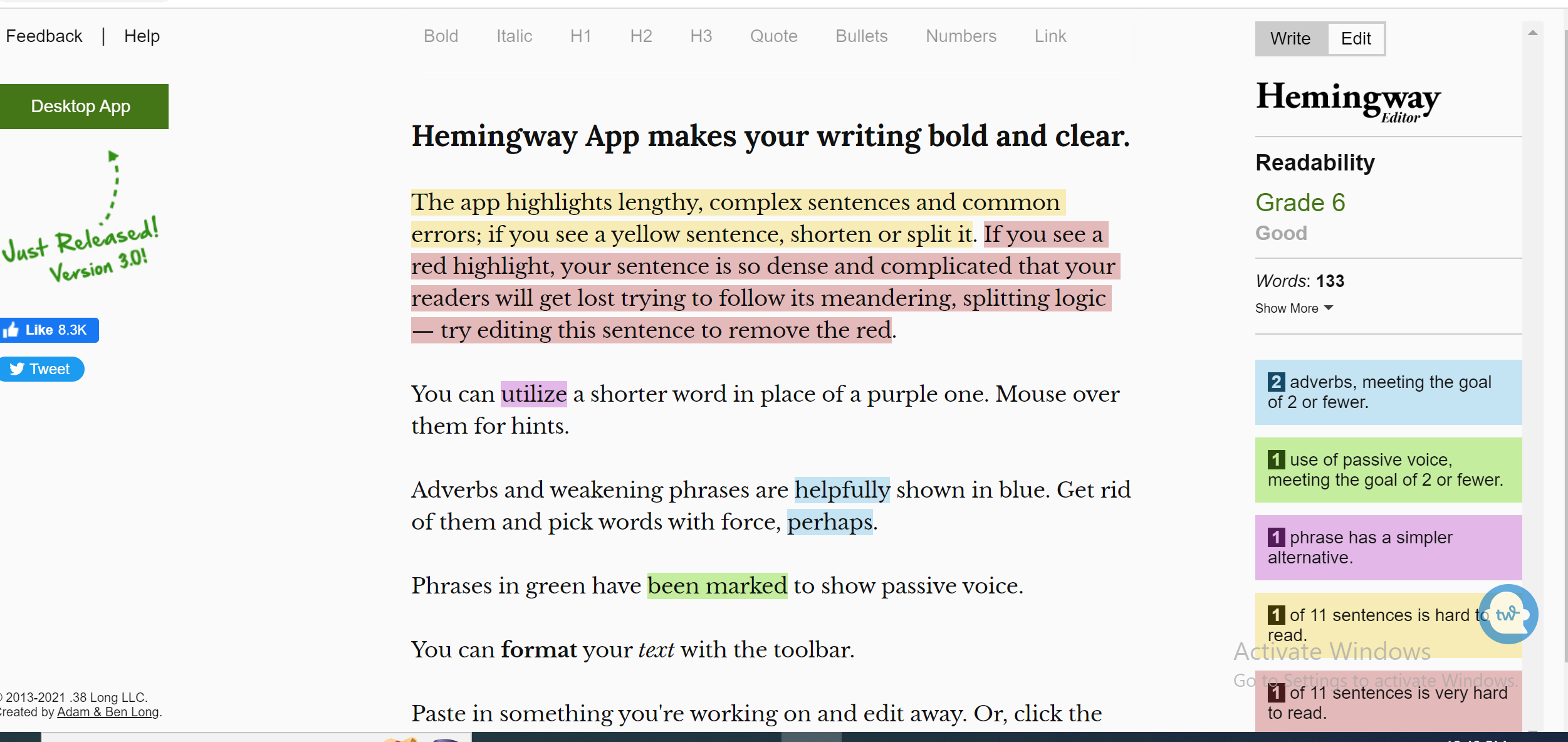SEO Content Writing is the process of creating helpful content on your website that answers questions, provides value, solves problems, and is comprehensible to the audience.
When you successfully do this, you attract organic traffic to your website and inevitably rank on Google.

SEO is an integral part of content writing and is the heartbeat and existence of website ranking.
What is SEO in Content writing?
Search Engine Optimization popularly referred to as SEO, is the means of writing to provide and develop content to appear first on Google and other search engines like Bing and Yahoo.
As easy as this may seem, to triumph, SEO requires you to know what people are searching for and provide answers to research by using their actual keywords.
We can agree that SEO in Content writing is the process of making websites visible to the audience by writing helpful content that solves and answer problems.
A website with helpful content will appear on the first page of search engines when a topic is searched for.
The higher the website ranks, the more visible it is for new and more visitors. Having new and more visitors to your website means profit and brand awareness.
Difference between Content Writing and SEO Content Writing
Content writing and SEO Content writing are conflicting. Both involve writing and creating content but there is a slight difference.
When it comes to Content writing, a writer is tasked with creating content that is simple, understandable, and accessible.
On the other hand, in SEO Content writing, a writer is not only tasked with creating content that is simple, understandable, and accessible but the content should be centred around the use of appropriate keywords, titles, subtitles, headings, subheadings, meta description, adding appropriate internal and external links etc.
When SEO content is properly written, it reaches a wider audience and gets ranked on Google or other search engines.
Why is SEO content writing important?
Wouldn’t it be great to find your article or website ranking first on Google or other search engines?
When it comes to SEO Content writing, it is a good strategy to not only rank in search engines but also makes a profit from it.
As an integral part of content writing, there are numerous reasons why SEO writing is important in today’s world.
Here are some reasons:
1. SEO Boosts Search Rankings
The most essential importance of SEO writing is its ability to boost your website to appear first on Google or other search engines.
It is the job of an SEO writer to create high-quality content with proper keywords to improve and bring ranking to websites. The more useful and quality content a website offers, the more chances it gets to rank on search engines.
2. SEO Helps In Generating Traffic To Your Website
When your website has useful/quality content that answers questions the audience searches for, it gains visibility thereby generating traffic to your website. There more you generate this traffic to your website, the more likely the website gets a new and more audience coming for the useful and helpful content.
“Traffic” refers to people, customers, or audiences who come to a website to read content that catches their attention.
3. SEO Builds Brand Authority
SEO writing helps in building brand authority.
Creating helpful content that answers people’s questions and solves their problems, builds authority in your business as people will begin to trust your content and come back for more, and eventually buy your products.
4. SEO Boosts Brand Recognition
With SEO writing, you can build your brand to get recognized by new people. If you create content that gives value, answers their questions, and solves their problems. , you ultimately build trust and relationships with new and existing people.
Do Content Writers need to know SEO?
As a content writer, you have to know and understand what SEO is all about. The goal of an SEO content writer is to become better, have more clients, and get appreciated for the masterpiece you create.
SEO is of great importance to content writers for the following reasons:
- It helps you create content that will rank on search engines
- It helps you comprehend and know what people want and are searching for
- It helps you become better at creating helpful, engaging, and useful content
- It helps you reach a wider audience and generate traffic to the websites
- It helps in creating clear, concise, and original content
How do I become an SEO content writer?
Becoming an SEO writer requires you to put in the time, work, dedication, and devotion to creating useful content.
If you want to become an SEO writer, you should:
a) Have or Develop a passion For Writing
SEO writing does not just involve writing but building a passion for it. With AI as our only competition, having a passion for writing and creating original content is an essential skill one can have.
b) Learn More About SEO
Make research about SEO and be willing to learn the basics of SEO. There are many free and paid learning resources online like Udemy, Youtube, Skillshare etc. Identify your skill level and level up.
RankMath also offers helpful SEO learning if you are using their SEO plugin.
Also, follow blogs on SEO like Backlinko and Neil Patel’s blog/newsletter.
c) Carry Out Research
In becoming an SEO writer, you need to be able to carry out research, be good at it, understand what people are looking for, and what questions they are asking, and provide them with the right answers. You need to have skills in SEO off-page SEO, particularly keyword research.
This will help you to know what people are asking for when searching on Google or other search engines.
You will also know the types of keywords to make your content rank for.
There are two types of keywords in SEO Content writing – short and long tail
An example of short tail keywords is “how to love” while long tail keywords are long with more words eg “how to love a man deeply”
d) Create helpful and concise content
Write on point and aim for value. Do not write to prove your expertise, write to help the reader. Make it reasonably short ( and comprehensively long when there is a need).
- Leave out ambiguous words or big grammar.
- Use headlines, headings, etc
- Include links either internal or external when writing
- Be good at editing and proofreading content
SEO content writing: a step-by-step guide
As stated, the aim of SEO is in creating the finest content that answers questions and is centred around keywords that ladders first in Google and other search engines. In creating content on a website, on-page and off-page SEO are carried out.
- On-page SEO is any activity done within the website to optimise the content to be discovered by the audience through search engines.
- Off-page SEO is any activity done outside the website to increase the chances of getting traffic and visibility for a website’s content.
If you want to write SEO content, you must follow these steps:
- Know what you are writing
- Know your audience
- Choose your keywords and use them naturally
- Curate a title for the content
- Have an introduction to the article
- Write concisely
- Have a meta description
- Add your keywords in the first paragraph
- Create headings (H1, H2, H3) and subheadings
- Link your content internally or externally
- Use active voices
- Use shorter sentences
- Use high-quality images. Take good photos on the subject matter or download them from Unsplash, Pixel or Pixabay.
- Edit and proofread
When creating articles for an audience, there are ways to write to answer the reader’s questions or solve a problem.
We have developed a content structure to help you kick-start your writing journey.
Content Writing Templates (Structure)
1. The Ice Breaker Structure:
This type of content is written using the steps below:
- The topic of the article/headline
- Introduction to the article
- Insert high-quality image
- Answer to the topic
- Body of the article
- Conclusion or Key takeaways
- The topic of the article/Headline: This is the headline, make it captivating and must contain your article’s keywords.
- Introduction to the article: This is why it is called the icebreaker structure. You have to break the ice by using an intro that prepares the reader’s mind to consume the whole article. The point is not to provide any answer in the introductory part of the article. Just create interest and curiosity.
- Insert a high-quality image: After the intro, insert an image that relates to the article. People love to see relatable pictures. “An image conveys a thousand words”. This picture should be SEO-optimised too. It is advisable to snap original pictures or design one with Canva. Alternatively, download free stock photos from Pixabay.com, Pixels.com, GettyImages etc.
- Answer to the topic: Assume that you are in an interview where you are asked to explain a broad topic in one or two sentences. This is what to do here. Go straight to the main topic’s answer. Do not exceed 2 short sentences. Bold your text to optimise it for use as a snippet by Google.
- Body of the article: In this area, you are at liberty to write everything about the topic. This is usually the longest part of the article. Consider the body of the article as the main article. Cover all the areas and provide correct and relevant answers. The body of the articles may have several headings and subheadings.
- Conclusion/Key Takeaways: This is a way to wrap up and give your final thoughts, and recommendations, or summarise the article into key points. This area could advise the reader on what to do next.
Click here to see an example of an article written in line with the Ice breaker content structure.
2. The Answer First Structure:
This is a bit different from the icebreaker structure. The main difference is that it provides an answer in the introductory part of the article.
Here are the steps to follow;
- The topic of the article/Headline
- The quick answer to the topic
- High-quality image
- Answer target
- Body of the article
- Conclusion/Keytakways
- The topic of the article/Headline: Craft your SEO headline.
- A quick answer to the topic: This is an intro to your article, but there is a twist here. In this answer first article structure, define the topic or provide a direct answer that provides insight into the whole topic in one or two sentences. Make sure to include the article keywords in your answer.
- High-quality image: Insert a high-quality image here. This is the same as the Ice breaker article structure discussed earlier.
- Answer target: An answer target is rather similar to step 2 of the “answer first article structure”. Here you should answer the question again in a different way and bold the text. Answer with authority and avoid words like “maybe, I think, kind of” that suggest guesswork. The point is to increase the chances of getting your article to appear on Google as a snippet.
- Body of the article: This is the same as with the “Ice Breaker Structure”. It is the main article and where most of your time should be spent to deliver value. This section will have headings and subheadings. It is the main article’s content where every value about the topic is delivered. write freely.
- Conclusion/Keytakways: Provide your final thoughts, key points or recommendations and end the article.
Click here to see an example of an article written in line with the “Ansswer First” content writing template.
SEO Content writing tools
Do you want to create contents that rank on Google?
Google and other search engines make use of algorithms to give your website a rank by giving importance to the keywords used. Over the years, digital marketers have gotten a grasp on how search engines work and now create contents that rank on search results.
There are SEO Content writing tools that help in creating useful content much easier and stress-free for your audience. Some tools even go as far as detecting plagiarism or correcting your grammar.
-
Grammarly

This is my favourite of all content writing tools. Grammarly is one of the best writing tools for checking spelling, and grammar and detecting plagiarism. Not only does Grammarly check your spelling, error, and grammar but it also suggests grammar for you and rewrite for clarity once you accept.
It further detects the tones of your content and makes better suggestions for you.
-
SEMrush Writing Assistant

SEMrush writing assistant is a beginner-friendly too tool that makes sure that your content follows SEO principles. It can help you curate new content or optimise existing blog articles. The sweetest part is that it recommends new article ideas. It also provides you with templates to write your article.
-
Yoast’s Real-Time Content Analysis

Yoast is loved by many because it shows you where to use a keyword and how frequently you used it in your content. This feature enables it to further alerts you if you use the keywords unnecessarily. It is a WordPress plugin that is used for on-page SEO. Although it has a paid version, the free version does a good job of optimising your content to be SEO compliant. A big and better alternative to Yaost is the RankMath on-page SEO plugin.
-
Hemingway App

This SEO writing tool supports SEO and helps to point out errors like passive voice usage, wrong use of adverbs, etc that may render your content mediocre. Hemingway App prides itself to be to help curate and create highly dependable content.
-
Clear scope

This writing tool is simple, helps with SEO in Content writing and provides suggestions on how to improve your content for readers’ satisfaction.
-
Turnitin

This is a plagiarism-checking tool that scans written content and carries out a contrast check on other articles for any copying from another resource.
These content writing tools are superb tools to create SEO-optimised articles.
How long does it take to learn SEO Content Writing?
If you want to learn SEO Writing, it takes roughly one month or more dependent on your learning skills, how many hours you are willing to sacrifice, your experience, and your understanding level.
There are many forms of learning SEO content writing.
- By reading published articles
- By listening to educational podcasts about SEO
- By watching SEO educational videos online or downloading them
- By asking questions from other SEO writers
- By learning on your own (to do this, create a website for the sole purpose of growing it, learning, and relearning SEO)
Where can I learn SEO content writing for free online?
There are free courses and resources where you can learn SEO content writing for free. SEO content writing is teachable as it is learnable. If you want to learn SEO writing, these are resources and courses to get you started.
- Udemy SEO Training by Moz
- RankMath Free SEO course
- Yoast Free SEO Course
- SEO Training and Tutorials by LinkedIn
- Skillshare
- Coursera
- SEMrush Academy
- Google’s SEO Starter Guide
- SERPStat’s SEO Guide
- Youtube
- Clickminded Free SEO Course
There are more online courses and resources to learn SEO content writing but it takes willingness and dedication to successful be an SEO content writer.
Checklist to Write an SEO optimized blog post
If you want to write an SEO-optimized blog post that ranks in search engines, here is a checklist of what your content should have.
- Carry out an SEO research
- Have an SEO-optimised introduction
- Use keywords properly
- Have a meta description
- Write an article or blog post that is direct and straight to the point
- Have an outline to follow
- Have a catch-to-attention title
- Provide links – internal or external
- Use bulletins to make your points
- Hit the nail on the hammer with the body of the content
- Optimize and use high-quality images
- Proofread
Key Takeaways
- An SEO content writer should be able to create original and concise content without copying and pasting from other resources. In creating content consistently, you grow and become better
- AI and other content writing tools that exist today can never replace human-written content, thoughts and views in content writing.

